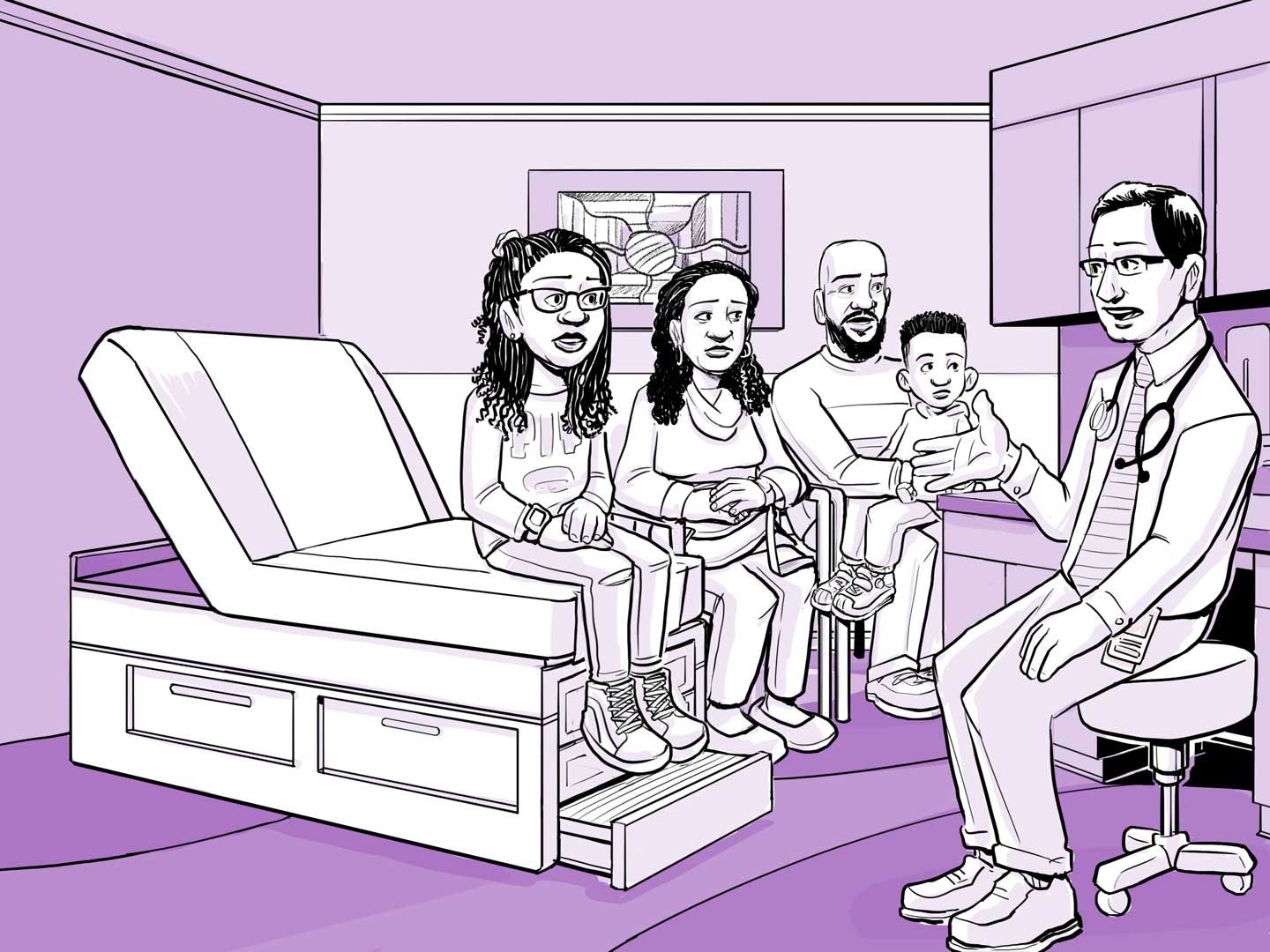Month 3
Nia is 13
Month 3
Nia is 13
There is no full match. The next option is one of Nia’s parents. This will be a half match.
If there is no full match, doctors can use a half matched (haploidentical) donor.
Each parent is a half match for their biological children.
- A parent can be a donor even if they carry the sickle cell trait gene, but not if they have sickle cell disease.
- Sometimes one parent can be a better match to you than the other. Your doctors will check.
- Sometimes a parent may not be able to be a donor because of their health or age.
Half matched (haploidentical) bone marrow transplant is usually done as part of a clinical trial or research study.
- It is a newer treatment and has more risks than fully matched bone marrow transplant.
- It can cause more serious health problems because the donor is not fully matched to you.
- Doctors understand the risks.
- Doctors are getting better at half matched (haploidentical) bone marrow transplant, so the risk of problems is lower than before.
Half matched (haploidentical) bone marrow transplant
This is a newer treatment which has only been used for 15 - 20 years for people with sickle cell disease. It has more risks than fully matched bone marrow transplant.
- Half matched (haploidentical) means that only half of the HLA on the donor’s cells are similar to the HLA on your cells.
- This is only used when there is no fully matched donor. It can cause more serious health problems because the donor is not fully matched to you.
- Doctors understand the risks and are getting better at half matched (haploidentical) bone marrow transplant, so the risk of problems is lower than before.
- Half matched (haploidentical) bone marrow transplant is usually done as part of a clinical trial or research study, because doctors are still learning about half matched bone marrow transplant and trying to make it safer.
Different types of donors:
Parents
- A parent is always a half match for their biological children.
Siblings
- Some of your siblings can be a half match.
Other family members
- Sometimes, other family members (cousins, aunts, uncles) could be a half match, but this is not common.
Human leukocyte antigen (HLA) is on the surface of cells in your body.
- All the cells in your body have the same HLA type.
- Your HLA type is different from most other people.
- Your body will attack cells from someone with a different HLA type.
- This is why doctors are looking for someone with a matching HLA type.
